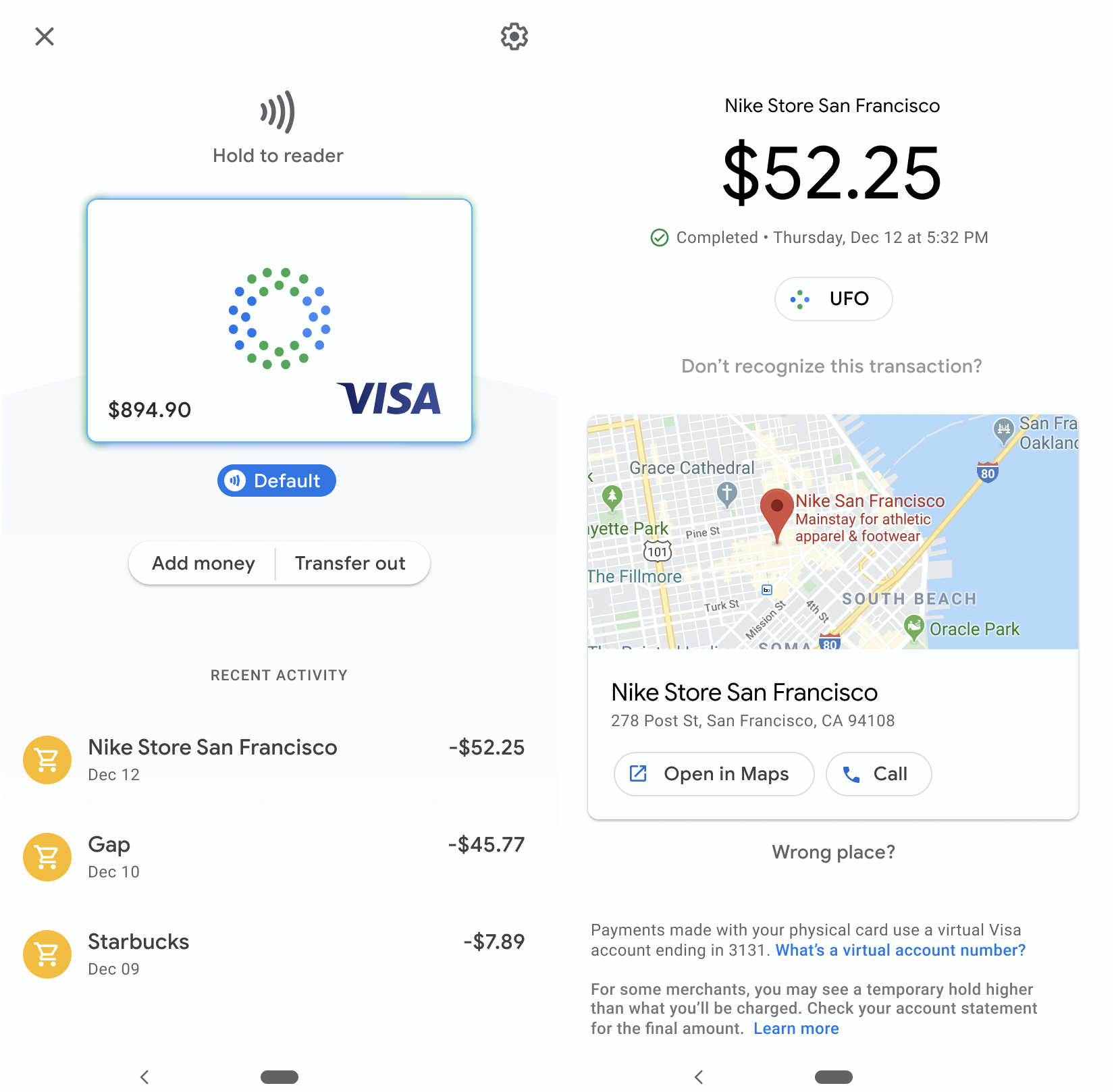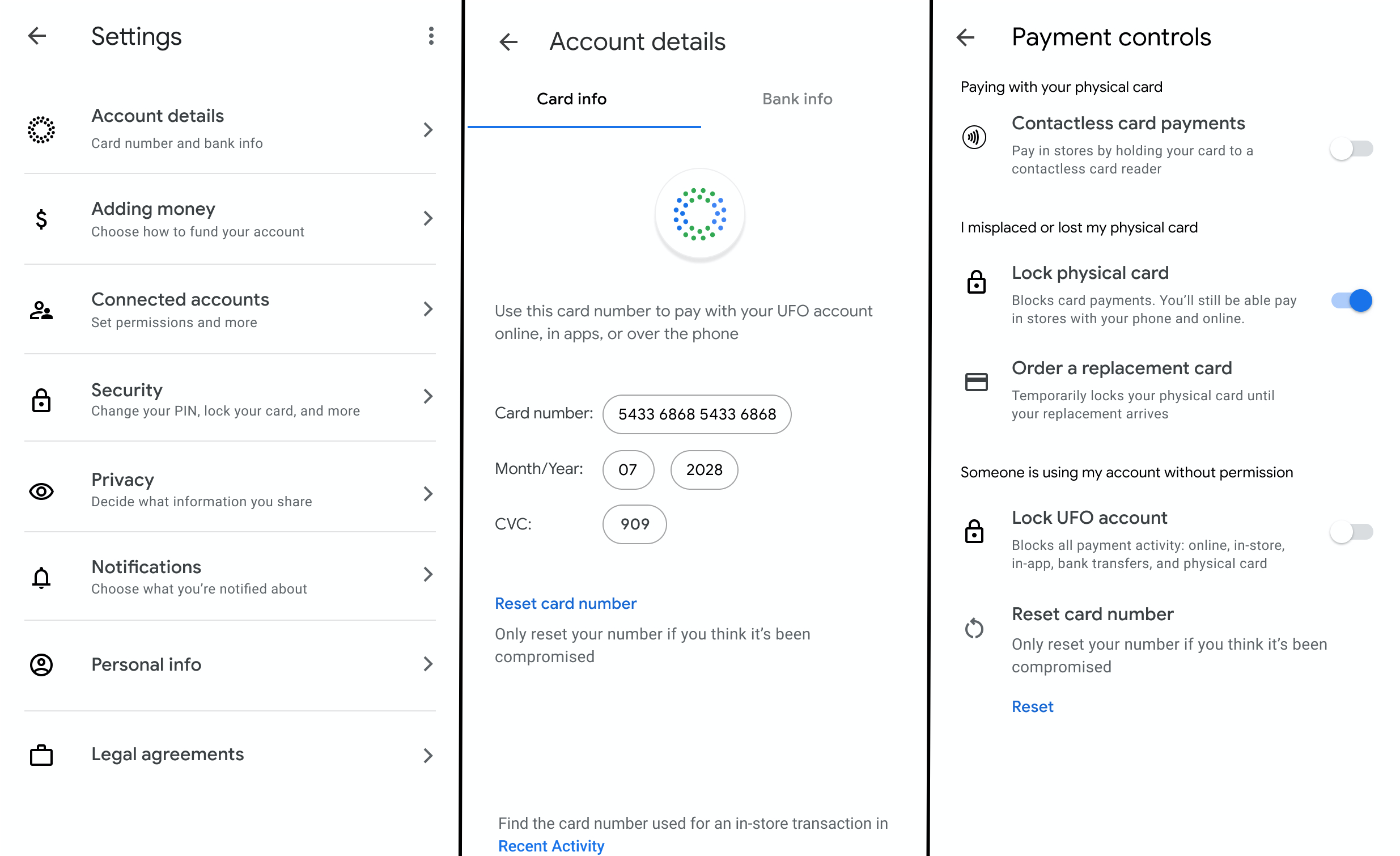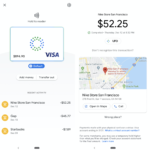Europe’s PEPP-PT COVID-19 contacts tracing standard push could be squaring up for a fight with Apple and Google
A coalition of EU scientists and technologists that’s developing what’s billed as a “privacy-preserving” standard for Bluetooth-based proximity tracking, as a proxy for COVID-19 infection risk, wants Apple and Google to make changes to an API they’re developing for the same overarching purpose.
The Pan-European Privacy-Preserving Proximity Tracing (PEPP-PT) uncloaked on April 1, calling for developers of contact tracing apps to get behind a standardized approach to processing smartphone users’ data to coordinate digital interventions across borders and shrink the risk of overly intrusive location-tracking tools gaining momentum as a result of the pandemic.
PEPP-PT said today it has seven governments signed up to apply its approach to national apps, with a claimed pipeline of a further 40 in discussions about joining.
“We now have a lot of governments interacting,” said PEPP-PT’s Hans-Christian Boos, speaking during a webinar for journalists. “Some governments are publicly declaring that their local applications will be built on top of the principles of PEPP-PT and also the various protocols supplied inside this initiative.
“We know of seven countries that have already committed to do this — and we’re currently in conversation with 40 countries that are in various states of onboarding.”
Boos said a list of the governments would be shared with journalists, though at the time of writing we haven’t seen it. But we’ve asked PEPP-PT’s PR firm for the info and will update this report when we get it.
“The pan-European approach has worked,” he added. “Governments have decided at a speed previously unknown. But with 40 more countries in the queue of onboarding we definitely have outgrown just the European focus — and to us this shows that privacy as a model and as a discussion point… is a statement and it is something that we can export because we’re credible on it.”
Paolo de Rosa, the CTO at the Ministry of Innovation Technology and Digital Transformation for the Italian government, was also on the webinar — and confirmed its national app will be built on top of PEPP-PT.
“We will have an app soon and obviously it will be based on this model,” he said, offering no further details.
PEPP-PT’s core “privacy-preserving” claim rests on the use of system architectures that do not require location data to be collected. Rather devices that come near each other would share pseudonymized IDs — which could later be used to send notifications to an individual if the system calculates an infection risk has occurred. An infected individual’s contacts would be uploaded at the point of diagnosis — allowing notifications to be sent to other devices with which had come into contact.
Boos, a spokesman for and coordinator of PEPP-PT, told TechCrunch earlier this month the project will support both centralized and decentralized approaches. The former meaning IDs are uploaded to a trusted server, such as one controlled by a health authority; the latter meaning IDs are held locally on devices, where the infection risk is also calculated — a backend server is only in the loop to relay info to devices.
It’s just such a decentralized contacts tracing system that Apple and Google are collaborating on supporting — fast-following PEPP-PT last week by announcing a plan for cross-platform COVID-19 contacts tracing via a forthcoming API and then a system-wide (opt-in) for Bluetooth-based proximity tracking.
That intervention, by the only two smartphone platforms that matter when the ambition is mainstream adoption, is a major development — putting momentum behind decentralized contacts tracing for responding digitally to the coronavirus crisis in the Western world, certainly at the platform level.
In a resolution passed today the European parliament also called for a decentralized approach to COVID-19 proximity tracking.
MEPs are pushing for the Commission and Member States to be “fully transparent on the functioning of contact tracing apps, so that people can verify both the underlying protocol for security and privacy and check the code itself to see whether the application functions as the authorities are claiming.” (The Commission has previously signaled a preference for decentralization too.)
However, backers of PEPP-PT, which include at least seven governments (and the claim of many more), aren’t giving up on the option of a “privacy-preserving” centralized option — which some in their camp are dubbing “pseudo-decentralized” — with Boos claiming today that discussions are ongoing with Apple and Google about making changes to their approach.
As it stands, contacts tracing apps that don’t use a decentralized infrastructure won’t be able to carry out Bluetooth tracking in the background on Android or iOS — as the platforms limit how general apps can access Bluetooth. This means users of such apps would have to have the app open and active all the time for proximity tracking to function, with associated (negative) impacts on battery life and device usability.
There are also (intentional) restrictions on how contacts tracing data could be centralized, as a result of the relay server model being deployed in the joint Apple-Google model.
“We very much appreciate that Google and Apple are stepping up to making the operating system layer available — or putting what should be the OS actually there, which is the Bluetooth measurement and the handling of crypto and the background running of such tasks which have to keep running resiliently all the time — if you look at their protocols and if you look at whom they are provided by, the two dominant players in the mobile ecosystem, then I think that from a government perspective especially, or from lots of government perspectives, there are many open points to discuss,” said Boos today.
“From a PEPP-PT perspective there are a few points to discuss because we want choice and implementing choice in terms of model — decentralized or centralized on top of their protocol creates actually the worst of both worlds — so there are many points to discuss. But contrary to the behavior that many of us who work with tech companies are used to Google and Apple are very open in these discussions and there’s no point in getting up in arms yet because these discussions are ongoing and it looks like agreement can be reached with them.”
It wasn’t clear what specific changes PEPP-PT wants from Apple and Google — we asked for more detail during the webinar but didn’t get a response. But the group and its government backers may be hoping to dilute the tech giants’ stance to make it easier to create centralized graphs of Bluetooth contacts to feed national coronavirus responses.
As it stands, Apple and Google’s API is designed to block contact matching on a server — though there might still be ways for governments (and others) to partially work around the restrictions and centralize some data.
We reached out to Apple and Google with questions about the claimed discussions with PEPP-PT. At the time of writing, neither had responded.
As well as Italy, the German and French governments are among those that have indicated they’re backing PEPP-PT for national apps — which suggests powerful EU Member States could be squaring up for a fight with the tech giants, along the lines of Apple versus the FBI, if pressure to tweak the API fails.
Another key strand to this story is that PEPP-PT continues to face strident criticism from privacy and security experts in its own backyard — including after it removed a reference to a decentralized protocol for COVID-19 contacts tracing that’s being developed by another European coalition, comprised of privacy and security experts, called DP-3T.
Coindesk reported on the silent edit to PEPP-PT’s website yesterday.
Backers of DP-3T have also repeatedly queried why PEPP-PT hasn’t published code or protocols for review to-date — and even gone so far as to dub the effort a “trojan horse.”
#DP3T entered as a candidate to so-called PEPP-PT in good faith, but it is now clear that powerful actors pushing centralised databases of Bluetooth contact tracing do not, and will not, act in good faith.
PEPP-PT is a Trojan horse.
— Michael Veale (@mikarv) April 16, 2020
ETH Zürich’s Dr. Kenneth Paterson, who is both a part of the PEPP-PT effort and a designer of DP-3T, couldn’t shed any light on the exact changes the coalition is hoping to extract from “Gapple” when we asked.
“They’ve still not said exactly how their system would work, so I can’t say what they would need [in terms of changes to Apple and Google’s system],” he told us in an email exchange.
Today Boos couched the removal of the reference to DP-3T on PEPP-PT’s website as a mistake — which he blamed on “bad communication.” He also claimed the coalition is still interested in including the former’s decentralized protocol within its bundle of standardized technologies. So the already sometimes fuzzy lines between the camps continue to be redrawn. (It’s also interesting to note that press emails to Boos are now being triaged by Hering Schuppener, a communications firm that sells publicity services, including crisis PR.)
“We’re really sorry for that,” Boos said of the DP-3T excision. “Actually we just wanted to put the various options on the same level that are out there. There are still all these options and we very much appreciate the work that colleagues and others are doing.
“You know there is a hot discussion in the crypto community about this and we actually encourage this discussion because it’s always good to improve on protocols. What we must not lose sight of is… that we’re not talking about crypto here, we’re talking about pandemic management and as long as an underlying transport layer can ensure privacy that’s good enough because governments can choose whatever they want.”
Boos also said PEPP-PT would finally be publishing some technical documents this afternoon — opting to release information some three weeks after its public unveiling and on a Friday evening (a seven-page ‘high level overview’ has since been put on their GitHub here [this link has since been deleted – Ed.] — but still a far cry from code for review) — while making a simultaneous plea for journalists to focus on the “bigger picture” of fighting the coronavirus rather than keep obsessing over technical details.
During today’s webinar some of the scientists backing PEPP-PT talked about how they’re testing the efficacy of Bluetooth as a proxy for tracking infection risk.
“The algorithm that we’ve been working on looks at the cumulative amount of time that individuals spend in proximity with each other,” said Christophe Fraser, professor at the Nuffield Department of Medicine and Senior Group Leader in Pathogen Dynamics at the Big Data Institute, University of Oxford, offering a general primer on using Bluetooth proximity data for tracking viral transmission.
“The aim is to predict the probability of transmission from the phone proximity data. So the ideal system reduces the requested quarantine to those who are the most at risk of being infected and doesn’t give the notification — even though some proximity event was recorded — to those people who’re not at risk of being infected.”
“Obviously that’s going to be an imperfect process,” he went on. “But the key point is that in this innovative approach that we should be able to audit the extent to which that information and those notifications are correct — so we need to actually be seeing, of the people who have been sent the notification how many of them actually were infected. And of those people who were identified as contacts, how many weren’t.
“Auditing can be done in many different ways for each system but that step is crucial.”
Evaluating the effectiveness of the digital interventions will be vital, per Fraser — whose presentation could have been interpreted as making a case for public health authorities to have fuller access to contacts graphs. But it’s important to note that DP-3T’s decentralized protocol makes clear provision for app users to opt-in to voluntarily share data with epidemiologists and research groups to enable them to reconstruct the interaction graph among infected and at risk users (aka to get access to a proximity graph).
“It’s really important that if you’re going to do an intervention that is going to affect millions of people — in terms of these requests to [quarantine] — that that information be the best possible science or the best possible representation of the evidence at the point at which you give the notification,” added Fraser. “And therefore as we progress forwards that evidence — our understanding of the transmission of the virus — is going to improve. And in fact auditing of the app can allow that to improve, and therefore it seems essential that that information be fed back.”
None of the PEPP-PT-aligned apps that are currently being used for testing or reference are interfacing with national health authority systems, per Boos — though he cited a test in Italy that’s been plugged into a company’s health system to run tests.
“We have supplied the application builders with the backend, we have supplied them with sample code, we have supplied them with protocols, we have supplied them with the science of measurement, and so on and so forth. We have a working application that simply has no integration into a country’s health system — on Android and on iOS,” he noted.
On its website PEPP-PT lists a number of corporate “members” as backing the effort — including the likes of Vodafone — alongside several research institutions including Germany’s Fraunhofer Heinrich Hertz Institute for telecoms (HHI) which has been reported as leading the effort.
The HHI’s executive director, Thomas Wiegand, was also on today’s call. Notably, his name initially appeared on the authorship list for the DP-3T’s white paper. However, on April 10 he was removed from the README and authorship list, per its GitHub document history. No explanation for the change was given.
During today’s press conference Wiegand made an intervention that seems unlikely to endear him to the wider crypto and digital rights community — describing the debate around which cryptography system to use for COVID-19 contacts tracing as a ‘side show’ and expressing concern that what he called Europe’s “open public discussion” might “destroy our ability to get ourselves as Europeans out of this.”
“I just wanted to make everyone aware of the difficulty of this problem,” he also said. “Cryptography is only one of 12 building blocks in the system. So I really would like to have everybody go back and reconsider what problem we are in here. We have to win against this virus… or we have another lockdown or we have a lot of big problems. I would like to have everybody to consider that and to think about it because we have a chance if we get our act together and really win against the virus.”
The press conference had an even more inauspicious start after the Zoom call was disrupted by racist spam in the chat field. Right before that Boos had kicked off the call saying he had heard from “some more technically savvy people that we should not be using Zoom because it’s insecure — and for an initiative that wants security and privacy it’s the wrong tool.”
“Unfortunately we found out that many of our international colleagues only had this on their corporate PCs so over time either Zoom has to improve — or we need to get better installations out there. It’s certainly not our intention to leak the data on this Zoom,” he added.
Powered by WPeMatico
Leaked pics reveal Google smart debit card to rival Apple’s
Would you pay with a “Google Card?” TechCrunch has obtained imagery that shows Google is developing its own physical and virtual debit cards. The Google card and associated checking account will allow users to buy things with a card, mobile phone or online. It connects to a Google app with new features that let users easily monitor purchases, check their balance or lock their account. The card will be co-branded with different bank partners, including CITI and Stanford Federal Credit Union.
A source provided TechCrunch with the images seen here, as well as proof that they came from Google. Another source confirmed that Google has recently worked on a payments card that its team hopes will become the foundation of its Google Pay app — and help it rival Apple Pay and the Apple Card. Currently, Google Pay only allows online and peer-to-peer payments by connecting a traditionally issued payment card. A “Google Pay Card” would vastly expand the app’s use cases, and Google’s potential as a fintech giant.

Google the financial services company?
By building a smart debit card, Google has the opportunity to unlock new streams of revenue and data. It could potentially charge interchange fees on purchases made with the card or other checking account fees, and then split them with its banking partners. Depending on its privacy decisions, Google could use transaction data on what people buy to improve ad campaign measurement or even targeting. Brands might be willing to buy more Google ads if the tech giant can prove they drive a sales lift.
The long-term implications are even greater. While once the industry joke was that every app eventually becomes a messaging app, more recently it’s been that every tech company eventually becomes a financial services company. A smart debit card and checking accounts could pave the way for Google offering banking, stock brokerage, financial advice or robo-advising, accounting, insurance or lending.

Image Credits: jossnatu / Getty Images
Google’s vast access to data could allow it to more accurately manage risk than traditional financial institutions. Its deep connection to consumers via apps, ads, search and the Android operating system gives it ample ways to promote and integrate financial services. With the COVID-19 downturn taking shape, high-margin finance products could help Google develop efficient revenue opportunities and build its share price back up.
When TechCrunch asked Google for confirmation, it did not dispute our findings or assertions. The company offered us a statement it provided reporters following a November story, wherein Google told The Wall Street Journal’s Peter Rudegeair and Liz Hoffman it was experimenting in the checking account space. TechCrunch is the first to report Google’s debit card plans:
We’re exploring how we can partner with banks and credit unions in the US to offer smart checking accounts through Google Pay, helping their customers benefit from useful insights and budgeting tools, while keeping their money in an FDIC or NCUA-insured account. Our lead partners today are Citi and Stanford Federal Credit Union, and we look forward to sharing more details in the coming months.
For now, Google’s strategy is to let partnered banks and credit unions provide the underlying financial infrastructure and navigate regulation while it builds smarter interfaces and user experiences. It’s forseeable that one day Google might cut out the banks and take all the spoils for itself. Google launched a Wallet debit card in 2013 as an extension of its old payment app Google Wallet, but shut the card down in 2016. Given Google’s penchant for renaming or shutting down then reviving products, building a new debit card feels on-brand.
With people around the world suddenly more concerned about their finances amidst the coronavirus economic disaster, a debit card with more transparency and controls could be appealing.
First look at the Google Card
Traditional banking products can be clunky, often requiring phone communication with customer service or sifting through cluttered websites to address security issues. Google hopes to make financial management as intuitive as its email and mapping apps. The card and app designs shown here are not final, and it’s unclear when Google’s debit card may launch. But let’s take a look at what these internal Google materials reveal about its ambitions for its payment instrument.

The Google debit card will come co-branded with the Google name and its partnered bank, though the exact name of the product is still unknown. In the designs, it’s a chip card on the Visa network, though Google could potentially support other networks like Mastercard. Users are able to add money or transfer funds out of their account from the connected Google app, which is likely to be Google Pay, and use a fingerprint and PIN for account security.
Once connected to their bank or credit union account, users could pay for purchases in retail stores with a physical Google debit card, including with contactless payments, by just holding it up to a card reader. A virtual version of the card that lives on a user’s phone can also be used for Bluetooth mobile payments. Meanwhile, a virtual card number can be used for online or in-app payments.

Users are shown a list of recent transactions, with each including the merchant name, date and price. They can dig into each transaction to see the location on a map, get directions or call the store. If users don’t recognize a transaction, it’s easy to protect themselves with the card’s vast security options.
If a customer suspects foul play because they lost their card, they can lock it and optionally order a replacement while still being able to pay with their phone or online, thanks to Google’s virtual card number system that’s different than the one on their physical card. If instead they suspect their virtual card number was stolen by a hacker, they can quickly reset it. And if they believe someone has gained unauthorized access to their account, they can lock it entirely to block all types of payments and transfers.

The settings reveal options for notifications and privacy controls to “decide what information you share,” though we don’t have imagery of what’s contained in those menus. It’s unclear how much power Google will give customers to limit the company or merchant’s data access. Google’s decisions there could impact how transaction data might fuel its other businesses.
Fintech everywhere
Google is a relative late-comer to offering its own card. Apple launched its Apple Card in August, offering a slickly designed titanium Mastercard credit card backed by Goldman Sachs. It charges minimal customer fees, comes with a virtual card for use through Apple Pay and generates interest.

Apple Card
Apple does collect interchange fees from merchants, though, which Google could similarly gather to earn revenue. Last month, Apple changed the Card’s privacy settings to share more data with Goldman Sachs that might also help the two provide additional financial services. Apple Pay now accounts for 5% of global card transactions, and is forecast to hit 10% by 2024, according to Bernstein research. The underlines the gigantic market Google is gunning for here.
The stock brokerage and robo-advisor apps have also joined the payments race. Wealthfront launched cash accounts and debit cards last February, bringing in $1 billion in assets in two months and doubling the company’s total holdings to $20 billion by September. Betterment launched its checking product in October 2019 with a Visa debit card, but it doesn’t generate interest.
Robinhood botched the December 2018 launch of its checking accounts due to ineligible insurance, but relaunched in October 2019 with debit card withdrawls from 75,000 ATMs and a solid interest rate. It’s unclear how Google’s card will work with ATMs or how its checking accounts will generate interest.

Robinhood’s debit cards
The appeal for Google and the rest is clear. It seems whenever companies help move people’s money around, some of it inevitably “falls off the truck” and lands in their pockets. Financial services are typically low-overhead ways to generate revenue. That could be especially enticing, as Google has found many of its side hustle “other bets” to be unsustainable. It’s moved to prune some of these tertiary projects, such as its Makani wind energy kites.
Google may never find businesses as lucrative as its core in search and advertising, but it has the advantages to become a serious player in fintech. Its vast sums of cash, deep bench of engineering talent, experience building complex utilities, numerous consumer touch points and near-bottomless well of data could give it an edge over stodgier old banks and scrappier startups. And while Facebook slams into regulatory scrutiny and is forced to scale back its Libra cryptocurrency, Google’s more familiar approach via debit cards could pay off.
Powered by WPeMatico
Autofleet raises $7.5M to help fleets put idle vehicles into drive
On-demand mobility, when done successfully, strikes a balance between demand and supply while providing reliable service and making a profit. It’s a sweet spot that can be difficult, if not impossible, to find.
Autofleet, a startup that develops fleet optimization software to redirect underused vehicles into ride-hailing and delivery services, wants to solve that mission impossible. Now, the company founded by former Avis and Gett employees, has raised $7.5 million in seed and Series A funding to expand into international markets and grow its research and development team.
The Series A was led by MizMaa Ventures with participation from Maniv Mobility, Next Gear Ventures and Liil Ventures. Its seed financing was led by Maniv Mobility.
Autofleet developed a fleet management platform that can be used by rental car companies, car sharing operators and automakers to launch or better manage mobility services. The platform includes a booking app and integrations to delivery services, demand prediction, pooling and optimization algorithms as well as a driver app, and control center. The company also has developed a simulator tool that lets operators plan how a fleet will be deployed before a single vehicle hits the road.
For example, a rental company with abundant inventory and little demand for traditional multi-day contracts could use the platform to launch and then manage a car-sharing service. Autofleet already has partnerships with Avis Budget Group, Zipcar, Keolis and Suzuki .
That focus on managing supply side constraints is what attracted Maniv Mobility to invest in the seeding and Series A rounds, according the firm’s general partner Olaf Sakkers.
Autofleet’s biggest markets today are in Europe and the U.S., CEO Kobi Eisenberg told TechCrunch . The company is seeing early traction and fast growth in Latin America and Asia-Pacific. Eisenberg said they plan to double down on these markets. The company also expects to announce a partnership in Asia to accelerate growth in that region.
Autofleet is also looking for new opportunities for how vehicle fleets can be used, including ways to help micromobility companies improve their unit economics, according to Eisenberg.
In this age of COVID-19 — when asset-heavy businesses like rental car companies have seen their businesses upended — Autofleet has already discovered new uses for its platform. The platform is being used to help companies shift fleets to meet today’s demand for logistics and medical transportation. Autofleet is also selling its platform to companies looking to leverage their vehicle assets for their delivery services.
“We’re hearing from fleet partners around the globe who are experiencing dramatic drops in demand, and therefore significant portions of their fleet and drivers are un-utilized,” Eisenberg said. “At the same time, we have seen a sharp increase in demand for delivery services from businesses across all verticals: retail and supermarkets, restaurants.”
Powered by WPeMatico
Grain, a startup built expressly atop of Zoom for note-taking and video-clip making, raises $4 million
Whenever a platform breaks out, companies emerge to seize on its reach by building their services or products atop it. It happened with Facebook and Twitter and Slack. Now, it’s happening with Zoom, the video conferencing company that took the world by storm earlier this year as the coronavirus sent people around the globe indoors and into self-imposed isolation.
It’s not a brand-new trend. Plenty of companies are selling their wares through the Zoom App Marketplace, which launched in the fall of 2018 and now features 18 pages of providers. But Grain, founded in 2018 in San Francisco, is among the first to build its entire business around it, at least as a starting point.
What is that business? According to co-founder and CEO Mike Adams, the idea is to capture content in Zoom calls that can be saved and shared across platforms, including Twitter, Discord, Notion, Slack and iMessages.
Say a student wants to take notes; he or she can record part of what a teacher is saying to save or share with classmates, without having to rewatch an entire lecture. The same is true in work settings. By using Grain, a colleague can flag the most important bits of information that was conveyed, then share just those bits via a clip that has its own unique URL.
Grain also transcribes content in clips and allows users to turn on closed captions if they choose.
The video clips can range from 30 seconds up to 10 minutes. They can also be strung together into reels to create summary highlights. (These have no time limit.) Not last, users can trim or adjust the length of the highlight after it has been recorded, as well as control who else can edit the video afterward to prevent nefarious actors from manipulating the snippets.
Adams says he and his brother, Jake — a former software engineer at Branch Metrics with whom he co-founded the company — are even using Grain to save snippets of precious moments on Zoom involving nieces and nephews, though the focus is very much on the companies and schools that will pay on a per-seat basis for the software.
Indeed, Adams says the idea for Grain was really born at the last company he co-founded: MissionU, a Zoom-based one-year alternative to a traditional college whose students weren’t asked for tuition but instead agreed to hand over up to 15% of their incomes for three years once they landed a job that paid $50,000 or more.
MissionU — which was founded in 2016 and raised $11.5 million from investors — sold to WeWork in 2018 in a stock deal before its students earned anything (they were released from their income-sharing agreements). Still, the experiment was long enough that Adams, who left MissionU at the time of the sale, says he saw firsthand the need for better tools to help students capture what’s important in their online content.
The question, of course, is whether Zoom also sees the opportunity. Relying so heavily on another company is always a risk. (See Facebook and Twitter and the long list of third-party developers that have been burned by both companies.)
If Zoom, which is starting to make venture-like bets, were an investor in Grain, it might help inoculate it from potential competition down the road.
Still, that it isn’t didn’t dissuade other investors who are betting that Zoom will prove friend and not foe. In fact, late last year, Grain raised $4 million over two seed rounds from a long list of notable investors, including Acrew Capital, Founder Collective, Peterson Partners, Slack Fund, Scott Belsky, Sriram Krishnan, Andreas Klinger, Scooter Braun and others.
Now its 11-person team is ready to take the wraps off what they’ve been building in beta with some of that capital.
Certainly, Grain — which plans to eventually integrate with numerous other companies — could do worse as springboards go than Zoom, one of the rare new breakout platform companies in memory and a tool that, early this week, Oracle co-founder Larry Ellison called an “essential service” that will change how work is done.
Zoom has long been powered by viral end user adoption, enjoying growth internally and externally because of the nature of video conferencing across companies. Now, its pick-up as a consumer company is following a similar trajectory, with a high percentage of new users who are invited to Zoom calls eventually signing up for the service so that they can themselves host a call.
If Grain gets lucky, some percentage of that percentage will also discover Grain.
Powered by WPeMatico
Changing policy, Y Combinator cuts its pro rata stake and makes investments case-by-case
In a message posted to its internal communications channel earlier this week, the massive startup accelerator Y Combinator said it will change the terms of its own PPP (the YC pro rata investment program) and investing in companies raising seed and Series A rounds on a case-by-case basis.
The company began a policy of investing in every seed and Series A round for its portfolio companies back in 2015.
Since then, it has taken a 7% stake in every company that raised a priced seed and Series A round, investing in more than 300 Y Combinator companies over nearly 500 rounds.
Under its new policy, the accelerator is reducing its investment size from 7% to 4% and is only investing on a case-by-case basis going forward.
The reason for the change is that the number of companies in its portfolio has gotten too large for it to invest and some of the limited partners who back the accelerator’s operations are balking at making commitments to the pro rata investment program.
“We have significantly exceeded the funds we raised for pro ratas, and the investors who support YC do not have the appetite to fund the pro rata program at the same scale,” the accelerator wrote in a post seen by TechCrunch. “In addition, processing hundreds of follow-on rounds per year has created significant operational complexities for YC that we did not anticipate. Said simply, investing in every round for every YC company requires more capital than we want to raise and manage. We always tell startups to stay small and manage their budgets carefully. In this instance, we failed to follow our own advice.”
For entrepreneurs who take investments from the accelerator, the change is pretty significant. On the accelerator’s internal messaging board they worried about the potential optics of having the accelerator not make a follow-on commitment.
YC addressed those concerns by saying it would not make an investment decision until a company had already received an initial term sheet from a lead investor.
The changes will take effect on May 8, 2020, the investor said.
“In the future, we will no longer invest automatically in every priced seed and Series A/B round. Instead, we will exercise pro rata rights on a case-by-case basis, like other investors on your cap table,” the accelerator wrote. “We’ve heard your feedback that YC’s pro rata allocation is bigger than what some of you would prefer. So for those investments we do make, we will reduce the size of our pro rata and simplify its calculation to be a flat 4% participation right in each priced round. To calculate the size of YC’s pro rata investment in your round, simply multiply the amount of capital you are raising by 4%. If our ownership right before the round is less than 4%, we will cap our investment in the round at our then-current ownership. Our intention is not to have a super pro-rata right.”
Even with the reduced investment size, YC said it would only make investments in roughly one-third of its portfolio.
“The YC Continuity team will manage these investment decisions and will work very hard to inform you within a day or two of receiving your materials,” the accelerator wrote. “We will honor any pending pro rata investments for term sheets signed before May 8. But we wanted to communicate this message broadly so that founders can plan accordingly.”
Powered by WPeMatico
Impossible Foods rolls out to nearly 1,000 new grocery stores and supermarkets
Starting tomorrow, 777 supermarkets in California, Illinois, Indiana, Iowa and Nevada will begin stocking the Impossible Foods plant-based meat substitute.
Fueling the increased distribution and a push to expand its product suite and geographic footprint domestically and internationally is a $500 million round of funding the company closed in March.
Some of that money is supporting the company’s debut at stores like Albertsons, Jewel-Osco, Pavilions, Safeway and Vons.
In all, the company said it would be in nearly 1,000 grocery stores by tomorrow. That includes all Albertsons, Vons, Pavilions and Gelson’s Markets in Southern California; all Safeway stores in Northern California and Nevada; Jewel-Osco stores in Chicago, eastern Iowa and northwest Indiana; Wegmans stores on the East Coast and Fairway markets in and around New York.
Since its debut in September, the company said it was the number one item sold at the locations it was available on the East and West coasts.
The company’s 12-ounce packages are sold for somewhere between $8.99 and $9.99 and it plans to soon introduce the Impossible Burger at even more stores nationwide.
“We’ve always planned on a dramatic surge in retail for 2020 — but with more and more Americans’ eating at home, we’ve received requests from retailers and consumers alike,” said Impossible Foods’ president Dennis Woodside, in a statement. “Our existing retail partners have achieved record sales of Impossible Burger in recent weeks, and we are moving as quickly as possible to expand with retailers nationwide.”
Even as the company announced its expansion, it made moves to assuage any consumer concerns over the processes in place at its manufacturing facilities.
Impossible Foods said it had instituted mandatory work from home policies for all of its employees who can telecommute; restricted visitors to its facilities and those operated by co-manufacturers; banned all work-related travel; and implemented new sanitizing and disinfection procedures at its workplaces.
“Our No. 1 priority is the safety of our employees, customers and consumers,” Woodside said. “And we recognize our responsibility for the welfare of our community, including the entire San Francisco Bay Area, our global supplier and customer network, millions of customers, and billions of people who are relying on food manufacturers to produce supplies in times of need.”
The company said it was proceeding with its research and development initiatives; accelerating the ramp of its production facilities; and moving to broadly commercialize its Impossible Sausage and Impossible Pork products.
Impossible Foods has raised $1.3 billion from investors, including Mirae Asset Global Investments, Khosla Ventures, Horizons Ventures and Temasek.
Powered by WPeMatico
Healthcare co-op Savvy snags venture funding from Indie.vc
Savvy, a healthcare cooperative, has just raised an undisclosed amount of funding from Indie.vc.
Established as a cooperative that shares profits with its users, Savvy connects patients with healthcare companies and other providers looking to better serve people through products and services. Patients can take paid gigs that include tasks like interviews, focus groups and user testing.
Savvy is set up as a multi-stakeholder cooperative. Those stakeholders are divided into four classes: patients, Savvy employees, founders and investors. Up until now, Savvy has been entirely bootstrapped and sustained by its revenue, Savvy CEO Jen Horonjeff told TechCrunch via email.
“But as more and more companies are seeing that patient insights are critical to help their healthcare solutions find product-market fit, we need to scale up our operations to meet the demand,” she said. “This financing will allow us to expand our offerings, support more companies and, in turn, improve the lives of countless more patients.”
Cooperatives can oftentimes face trouble raising venture funding. That’s because their business models don’t generally align with the incentives of traditional venture capitalists, Horonjeff previously told me.
“I have to say a lot of investors are, first of all, not curious,” she said. “And those that are curious — and we’ve gone down the path with people like that — think we’re this cool new thing, but just don’t understand how it’s going to jive with the rest of their fund. So there aren’t great mechanisms in place to kind of bridge the gap between what people know and what the new economy could look like.”
For Indie.vc, which already takes a non-traditional approach to venture capital, co-ops fit into the firm’s vision. Indie.vc, which aims to be the last investment its founders need to take, is geared toward startups with founders who value preserving nationality and ownership.
As Indie.vc founder Bryce Roberts said in a statement, “Savvy represents everything we’d like to see in the future of impact business — shared ownership, diverse perspectives, and aligned incentives, tackling one of the largest industries on the planet.”
Powered by WPeMatico
Media software maker Plex launches new subscriber-only apps for music and server management
Media software maker Plex has released two new projects today from its internal R&D group, Plex Labs. One is an updated take on the classic Winamp player it calls Plexamp, and another is a dedicated app for Plex server administration. The projects are meant to appeal largely to Plex power users who take full advantage of Plex’s software suite, which has grown over time from being only a home media solution to a one-stop shop for everything from live TV to streaming audio.
The first of the new apps, Plexamp, is actually a revamp of the first Plex Labs project released. In December 2017, Plex introduced its own music player, whose name Plexamp was a nod to the Winamp player it aimed to replace. The project, like others from Plex Labs, was built by Plex employees in their spare time.
The goal with the original Plexamp was to offer a small desktop player that could handle any music format. The app let you use media keys for playing, pausing and skipping tracks and it worked offline when the Plex server ran on your laptop. It also offered visualizations to accompany your music that pulled from the album art.
While the original app ran on Mac or Windows, the new release works across five platforms, now including iOS, Android and Linux.
The app itself has been completely redone, as well — rewritten from scratch, in fact. And it’s tied to Plex’s subscription service, Plex Pass — meaning you’ll need to be a paying customer to use it.

The company explains the original version of Plexamp had issues around portability and licensing; it didn’t have an easy way to add functionality; and it was built with React, which tied it to the web.
To create the new Plexamp (version 3.0), Plex built an audio player library called TREBLE on top of a low-level commercial audio engine. TREBLE has been shipping in Plex’s commercial applications, but this release brings it to Plexamp. The addition helped make the app portable across almost all desktop and mobile platforms, as was it being rewritten in React Native.
The new app provides features Plex Pass music listeners want, like gapless playback, high-quality resampling, Sweet Fades (Plex’s “smart” alternative to crossfades) soft transitions and pre-caching. Plex also added a few more effects, including one for voice boosting spoken word audio and another for silence compression.
But the app really sells itself to longtime Plex users, as Plexamp lets you go back to see your own “top personal charts” for what you’ve listened to the most in years past. (Sort of like a Plex version of Apple Music’s Replay playlists).

Plexamp 3.0 also introduces a feature that lets you build your own mixes by picking a set of artists. Plus it offers a more expansive list of stations, supports offline listening and improves its search functionality.
The new Recent Searches area, for example, will save your search results from across servers, as well as TIDAL and podcasts. And a new Recent Plays feature shows you the music you consciously chose to play, again including across all servers and TIDAL.

There are some little touches, too, that show the personal care that went into the app’s design — like the way Plexamp uses album art and a process called “UltraBlur” to give each artist and alum page its own look. Or how there are options for light and dark — and lighter and darker — themes.

The other big new release from Plex Labs is the new Plex Dash app.
This mobile and tablet app lets you keep a close eye on your personal media server, including a way to see all playbacks even across multiple servers, plus other administrative features.
With Plex Dash, you can edit your artwork, scan for new media, fix incorrect matches, check on server resource usage, tweak library settings and view server logs live.
 Plex suggests you it run on the iPad you have mounted in the wall — like in your fancy media room, I guess — but for us poorer folks, it runs on your smartphone, too.
Plex suggests you it run on the iPad you have mounted in the wall — like in your fancy media room, I guess — but for us poorer folks, it runs on your smartphone, too.
It’s a power user tool, but one that will be welcomed for those fully immersed in a Plex-run home media setup. (And also a good way to respond to criticism that Plex is too focused today on its streaming and TV options, and not its core home media software customer base.)
Like Plexamp, the new Plex Dash requires a Plex Pass subscription and runs on iOS and Android.
The apps launched today are notable as they’re the first to arrive from Plex Labs since the original release of Plexamp in 2017 and because they require a subscription in order to work.
Plex at the end of 2019 said it had 15 million registered households using its service. Though the service is profitable, only a small percentage are paid subscribers. New apps with extra features, then, could convince more Plex users to upgrade.
Powered by WPeMatico
Giving brewers tech to make beer from any plant material, Province Brands raises $1.6M
There’s a potential climate-related crisis brewing in the beer industry and Province Brands has just raised $1.6 million for its technology that purports to be a solution.
The Canadian company, which has developed a way to make beer from any plant material, is pitching itself as a solution to the increasing shortages of barley and other grains caused by global climate change.
It’s a pivot for the brand. When it launched, the company was taking its technology to cannabis brands as a way to brew beer made from bud. But when the bottom started falling out of the cannabis market, Province Brands switched the pitch to the broader brewery business.
“The cannabis industry was overvalued from an equities perspective for years,” says Province Brands’ co-founder Dooma Wendschuh. “Starting in mid-2019 we started to see that crash… this is an industry that is very capital intensive… it requires a tremendous amount of investment to set up these facilities.”
As the market became less about the puff and more about the pass, Province decided to reach out to its investor base and raise a Canadian $2.2 million convertible note.
“We didn’t want investors to take a bath on it if that could be avoided,” says Wendschuh.
Province Brands’ last funding was its Series B in 2019 when the Company raised CAD $5 million at a CAD $70 million pre-money valuation, the company said in a statement.
“Closing this round quickly highlights the attractiveness of Province Brands’ technology, IP, and market opportunities,” said Wendschuh.
The money which came from previous institutional and angel investors will be used to continue marketing its technology more broadly to brewers impacted by rising prices for beer staples like barley and to launch its own branded hemp lager into the market.
The company’s Cambridge Bay Canadian Hemp Lager will be the first beer brewed from hemp, according to a statement from Province Brands. Made of only hemp, hops, water and yeast, the beverage contains no THC, CBD or phytocannabinoids and can legally be sold wherever alcohol is sold, the company said.
“The technology we created to brew beer from cannabis would allow us to brew beer from any non-starch plant material,” Wendschuh said. “This could be transformative for beer companies where the price of barley has gone through the roof.”
In some cases barley is too expensive for large-scale beer production, Wendschuh noted.
“Funds raised will help us complete Phase 1 construction of our 123,000-square-foot brewing facility and will enable us to receive additional licensing from Health Canada,” said Province Brands’ co-founder Jennifer Thomas. The company received its research and development license from Health Canada in late 2019.
Province Brands is already working with some bigger name liquor companies on making beer substitutes from their feedstocks. In one case, the company is working with an undisclosed tequila manufacturer on a beer made from agave.
It is notable that the transaction closed in less than two months at a time when capital markets have been challenging.
Powered by WPeMatico
Amperon raises $2 million for its predictive software for energy grids
Energy demand has fallen globally. Oil prices are plummeting. Everywhere in the energy world things look fairly grim, but keeping the lights on and electrons moving remains critical to keeping even the hobbled economies of the world humming.
That’s why startups like Amperon, which use data analysis to provide predictive tools for energy retailers and grid operators, are still relevant — and still raising money.
The company raised $2 million in a round that closed in February before the pandemic hit U.S. shores. And the service, according to co-founder Abe Stanway, is still vital.
“We tell them how much electricity their customers are going to use on a short-term and long-term basis,” Stanway said of the company’s service. “When these exogenous shocks and black swan events occur we get much more valuable because you need this machine learning in order to understand how the grid is going to behave.”
The value proposition was clear to investors like Blackhorn Ventures, which led the round, and other backers, including Garuda Ventures, Intelis Capital, Powerhouse Ventures, SK Ventures and V1.VC.
“Amperon builds real-time operational grid intelligence tools via smart meters and AI for utilities, energy retailers, grid operators and institutional traders,” said Emily Kirsch, Powerhouse founder and chief executive. “Amperon’s iterative demand forecasting is able to account for never-before-seen grid volatility resulting from a global pandemic, climate disasters or an increasingly complex grid.”
Amperon is working with four major geographies, including Australia’s two major grid regions and the ERCOT regional transmission organization responsible for Texas, and PJM, which manages the mid-Atlantic’s electricity grid.
Stanway said the new money would be used to expand the company’s reach across more grid operators in the U.S.
While Amperon’s technology is incredibly useful for utilities and grid operators during times of crisis, it can help save money in normal times too. Long-term utility planners typically over-budget their energy needs by 1% every year, which adds up to billions of dollars spent on unnecessary additional generation capacity, according to Amperon.
Lower spending means reduced electricity prices for consumers. Another issue that Amperon says it can help energy providers address is the increasing complexity of grid management. Renewable energy generation adds variability to the grid that utilities and grid operators have yet to effectively manage, the company said.
Powered by WPeMatico


